Walking on water is better than drowning.
~ Matshona Dhliwayo
A couple of days after we rehabbed our salamander pools, I saw a Water Strider skating across the surface of one. How did it find this new water so quickly? Striders are true bugs (Hemiptera), have wings, and can disperse by flying. Research suggests that aquatic insects are attracted to reflective surfaces (I have seen dragonflies trying to lay eggs on shiny car surfaces). One scientist that noticed how fast Water Striders colonize new bodies of water quipped “the air must be crowded with cruising Water Striders looking for a pond”. However it happens, I’m glad it did, as I enjoy watching these insects and their herky-jerky movements and the dimpled shadows they create on the water.
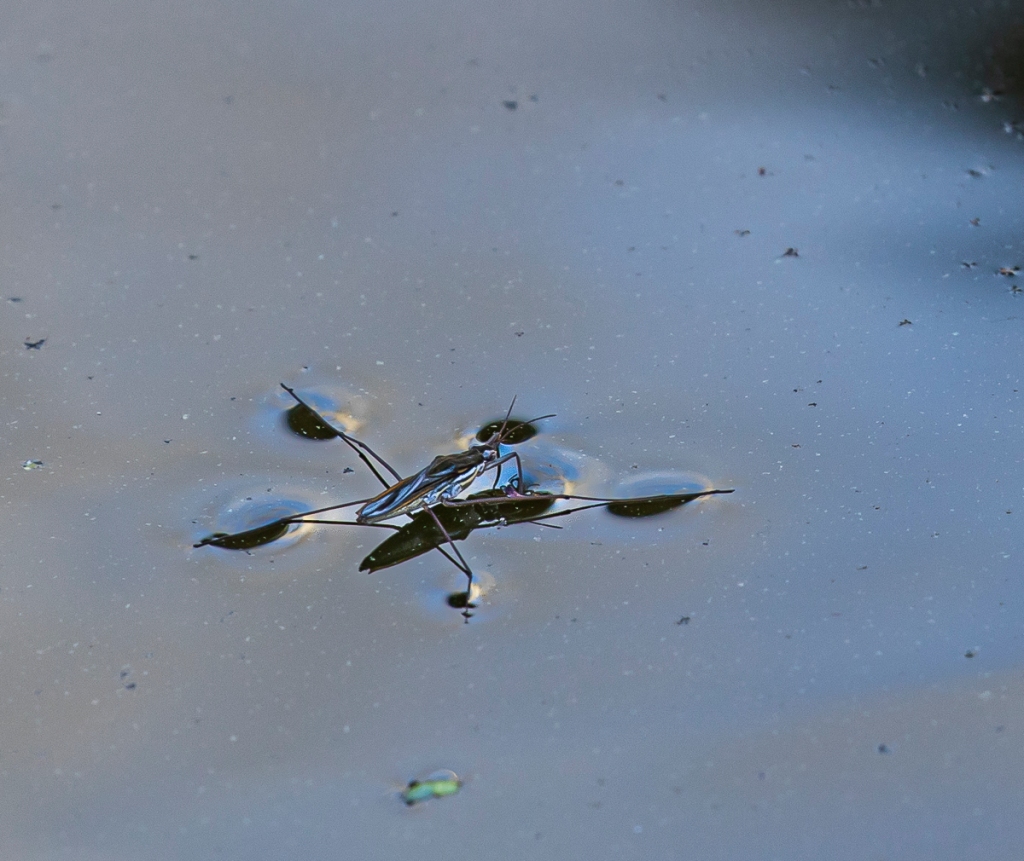
Water Striders (aka water skimmers, pond skaters, Jesus bugs) achieve their seemingly divine mobility through a combination of factors – the surface tension of water and the striders’ long legs that help distribute their weight over a larger area. Plus, those legs have retractable claws that occur before the tip of the leg (so they don’t puncture the surface tension). And the legs and body are covered by hundreds of tiny hairs per square mm, making the entire insect hydrophobic. If they are submerged by a wave or rain, they tend to pop back up to the surface because of air trapped in grooves in these hairs.
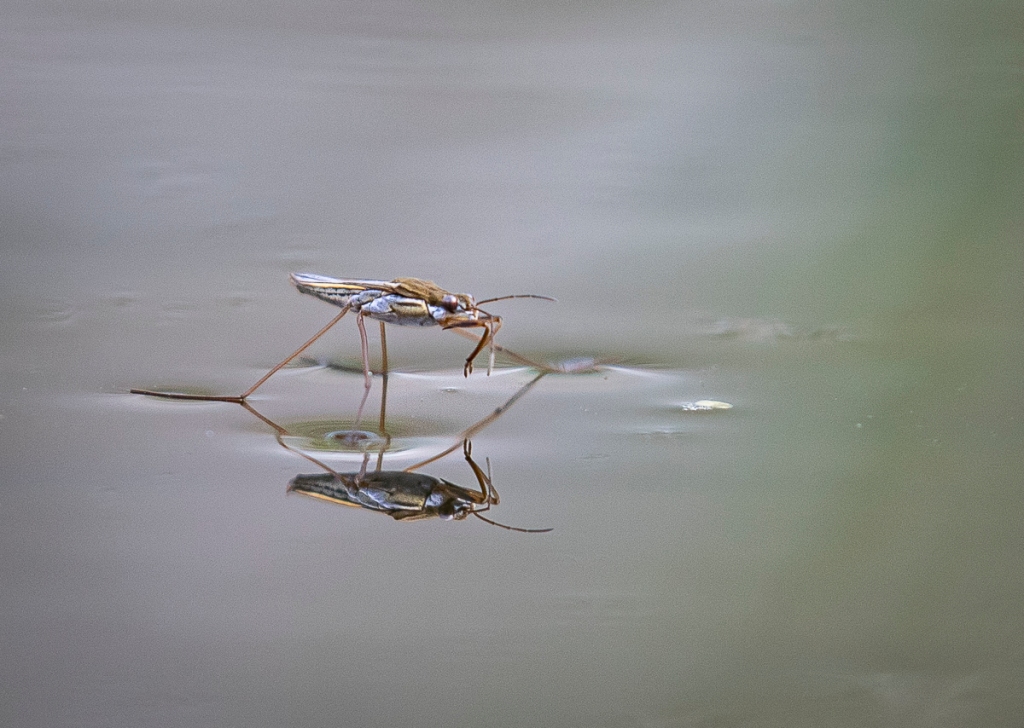
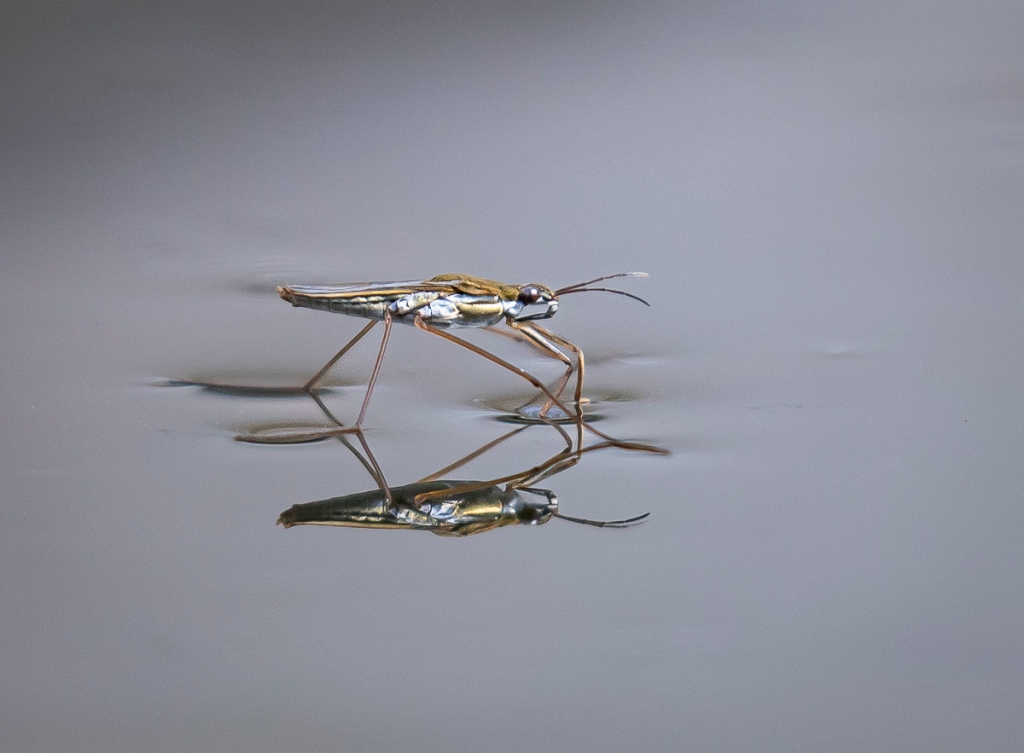
Water Striders are fierce predators (but harmless to us) and detect their prey through ripples on the water surface. They rapidly (some estimates say they can move at speeds of a hundred body lengths per second) skate over and grab their prey, often an insect that has fallen into the water and is struggling at the surface. They then pierce it with their beak, inject enzymes which dissolve the insides of their prey, and then suck out its body fluids.
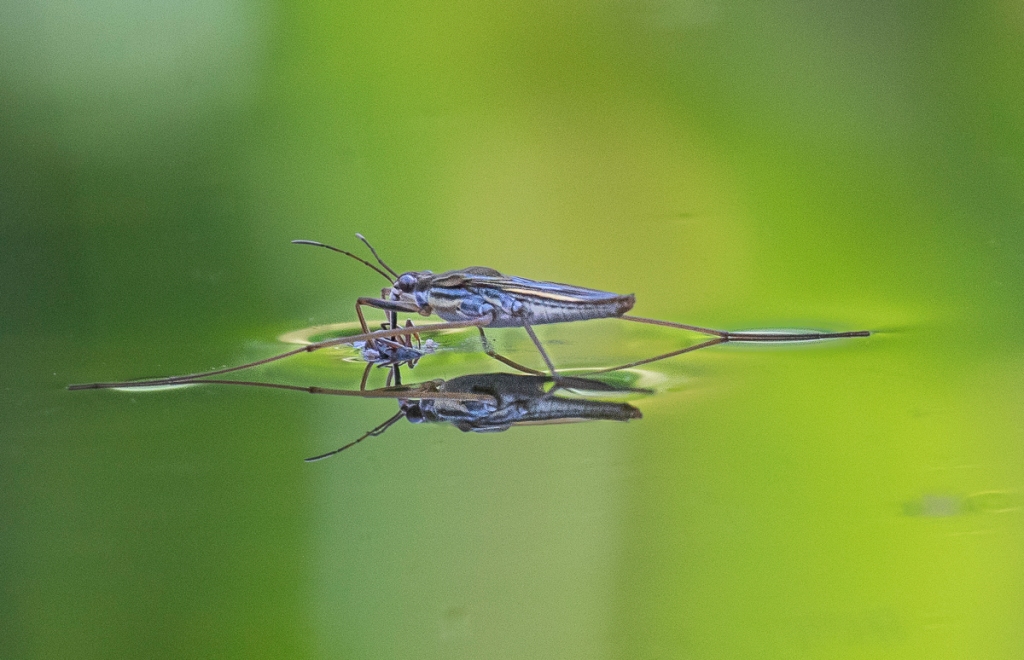
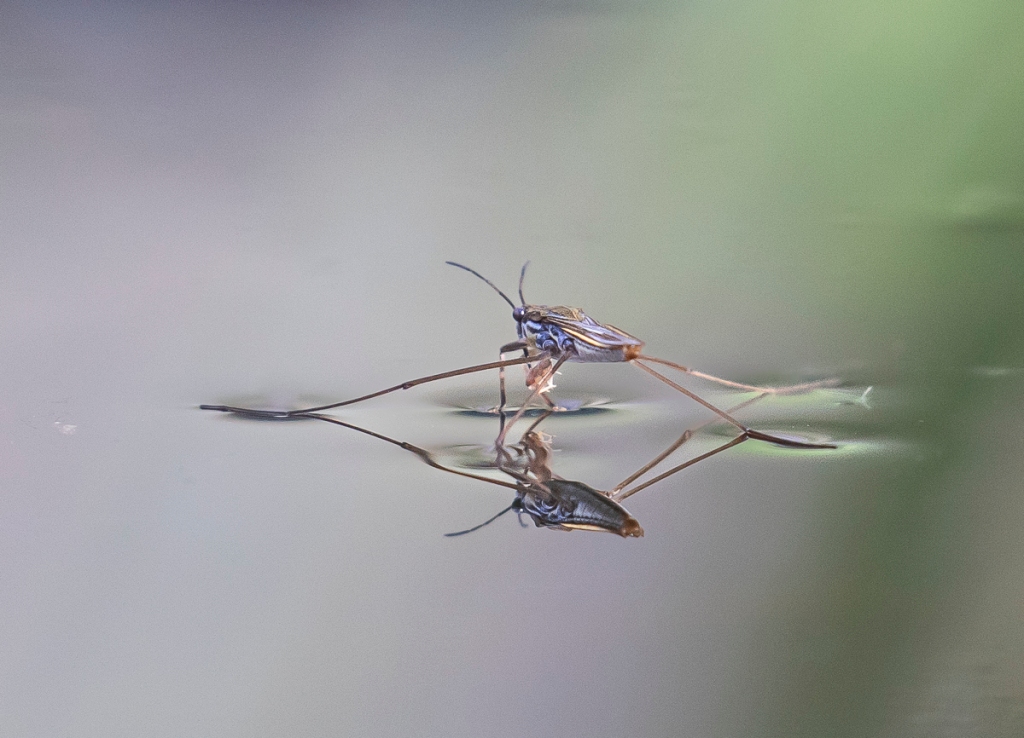
While leaning on the rock walls of the pools with my camera and telephoto lens, I saw some interactions between some striders. Some seemed aggressive with one strider chasing the other off. Then there were the obvious mating behaviors, where the smaller male would mount a female and remain coupled for a long time.
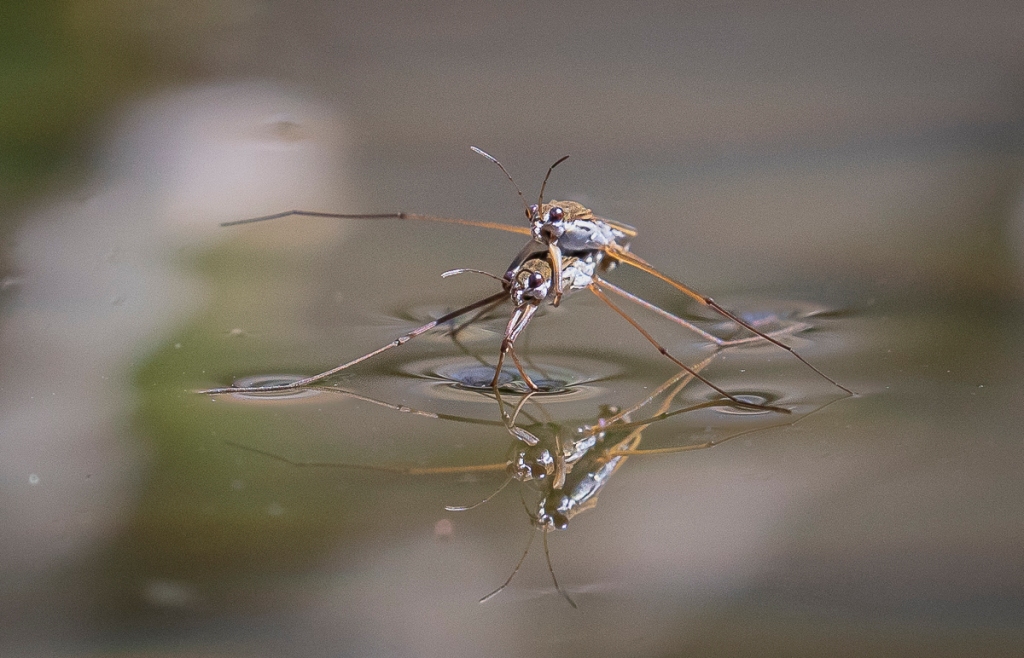
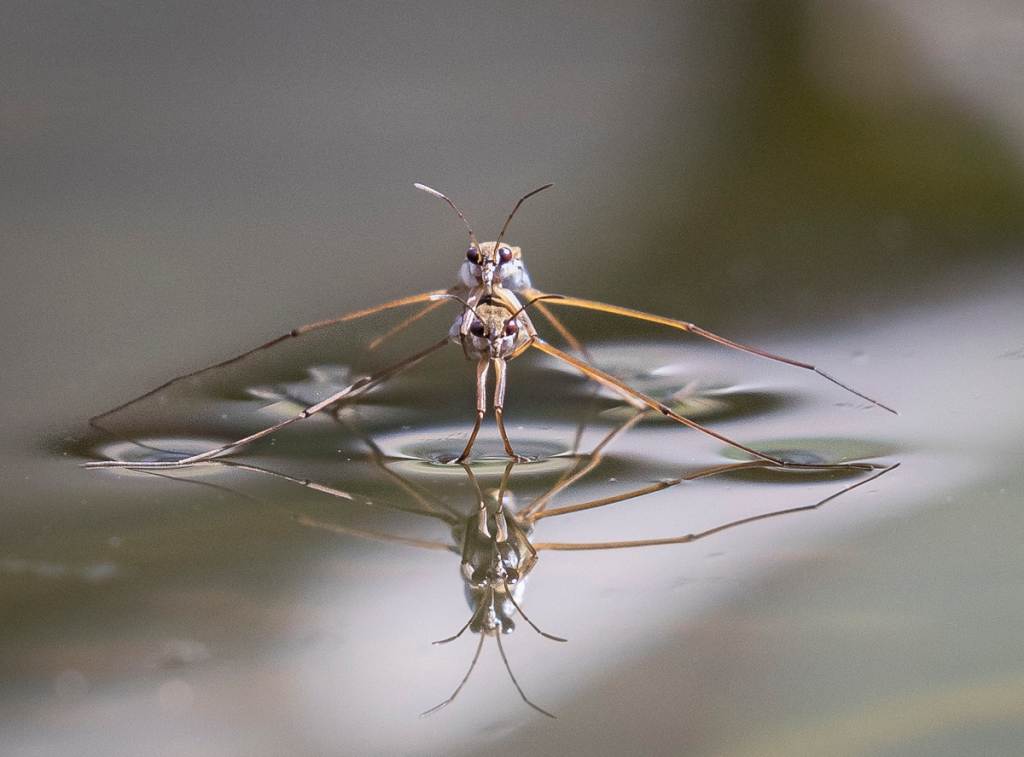
A few times I saw the mating pair flip over and that leaves me thinking the female is not always amenable to the male’s intentions. Here’s a quick clip in slow motion showing one such flip.
— A mating pair flips over – perhaps an attempt by the female to throw off the male
Almost ever time I visited the ponds in the past few weeks, I could find mating pairs. I found some images of their eggs online and started looking for them. Females go under water to lay eggs on solid surfaces like vegetation or rocks. The eggs hatch in about 12 days. So far, no luck in finding any, but I did see what I believe are newly hatched nymphs this week.
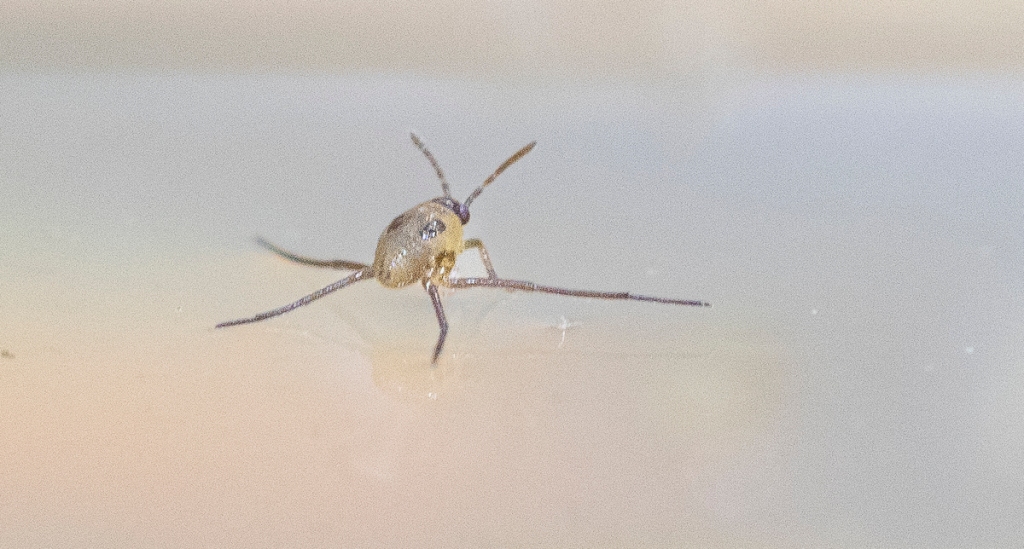
Water Strider youngsters resemble the adults (but much smaller) and lack wings (having only tiny developing wing pads). They molt several times before becoming an adult in a couple of months. These insects also apparently have something called wing polymorphism. They may or may not develop wings, and those that do, can have varying sized wings according to the stability of their watery habitat. If the habitat is small and likely to dry up, it is advantageous to have long wings for dispersal. Short or no wings are better in stable habitats like large lakes and rivers and mean less weight and reduced energy costs for movement.
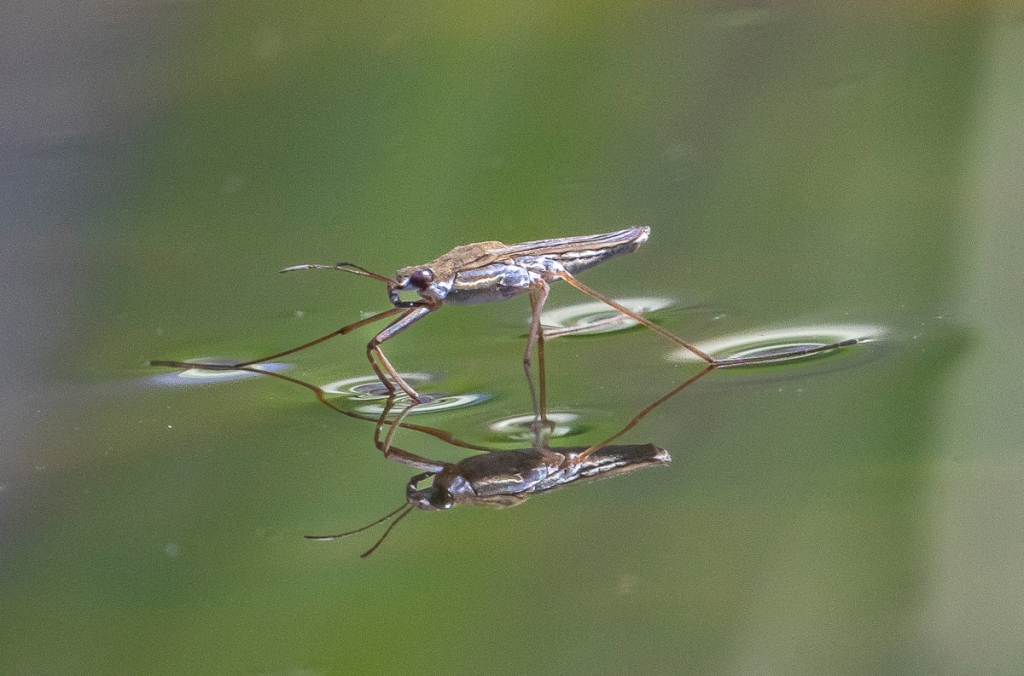
The next time you are hanging out at a creek, lake, or small woodland pool, take a few minutes to look for leg dimples on the water and try to appreciate the amazing adaptations and behaviors of these bugs that can truly walk on water.
